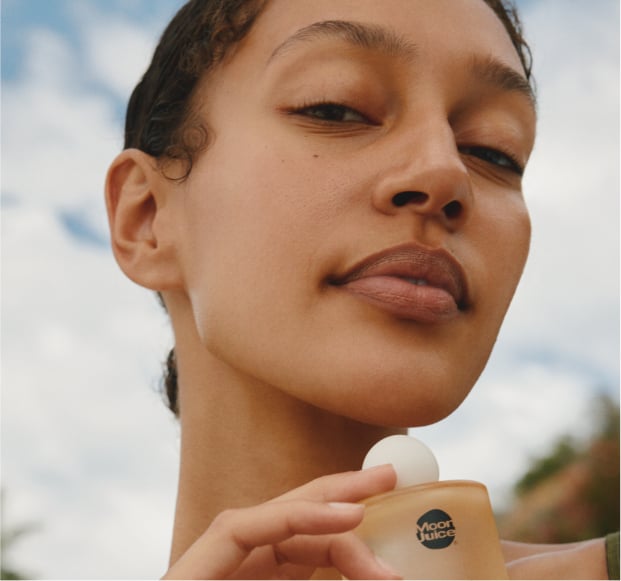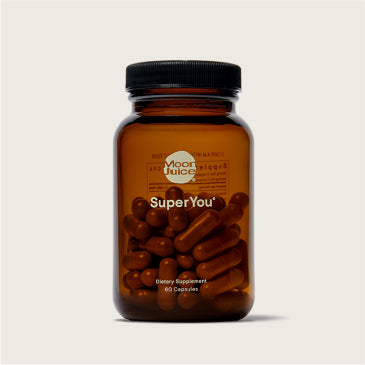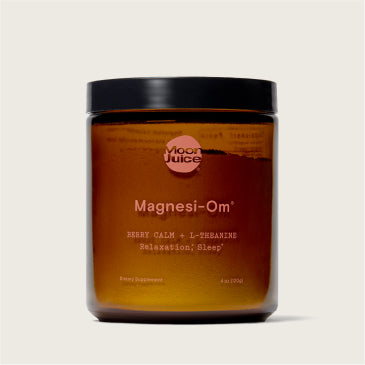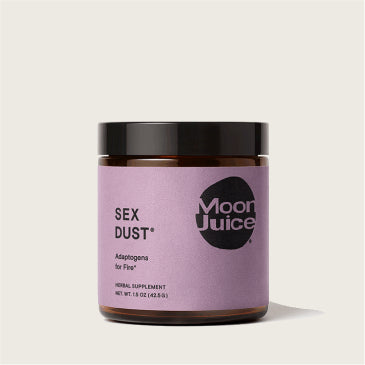Want brighter, fresher, more even-toned skin? How about relief from breakouts and smoother skin texture? You don’t have to book an appointment with your facialist or derm to reap these benefits with a smattering of treatments or tonics. Instead, you can simply include exfoliation in your routine — or, if it’s already one of your skincare steps, it may be time to re-evaluate which type is right for you.
Ahead, we’ll dive into the most popular types of exfoliation and their key benefits. Plus: 5 must-follow tips to ensure that your exfoliating regimen is safe and sound to promote your most luminous complexion yet. Read on to discover the benefits of exfoliating.
Types of Exfoliation
Exfoliators are important skincare products, but before we dive into their purpose, let's look at the different ways you can exfoliate for radiant and healthy skin.
There are two primary types of exfoliation: physical and chemical.
- Physical exfoliation involves the use of small particles (such as micro-beads or walnut shells in an exfoliating cleanser) or a tool (such as a washcloth, sonic device, exfoliating gloves, or dry brush) to manually scrub dead cells off the skin’s surface. Shaving and dermaplaning also count as types of exfoliation.
- Chemical exfoliation uses chemical agents — primarily alpha hydroxy acids (AHAs) and beta hydroxy acids (BHAs) — to dissolve dead skin cells. The main difference between AHA vs BHA is that AHAs are water-soluble, whereas BHAs are oil-soluble.
There are different types of AHAs, two of the most popular ones being Glycolic Acid and Lactic Acid. Meanwhile, the most commonly used type of BHA is Salicylic Acid. You can find chemical exfoliants in different skincare products, from cleansers and masks to peel pads and stand-alone liquid exfoliating solutions.
Benefits of Physical Exfoliation
Physical and chemical exfoliation work to remove the build-up of corneocytes (aka dead skin cells). Both methods stimulate cell turnover — an important process that supports luminosity and a refreshed complexion — which slows down over time.
As such, both exfoliation methods share the benefits of targeting dull skin and promoting softer, more radiant, and healthier-looking skin.
Since physical exfoliation manually buffs away dead skin cells, you can expect notably smoother skin to the touch immediately. If you’re the type to seek out instant gratification, this type of exfoliation could be attractive… but it comes with potential risks.
Although physical exfoliation has its merits, there are a few ways in which it can work against your skin. For instance, scrubbing too hard or using physical exfoliants too often can be aggravating, leading to redness and sensitivity. Moreover, certain types of exfoliating scrubs — primarily those that include walnut shells and other coarse materials with jagged edges — can cause micro-tears in the skin.
Any of these scenarios can lead to skin barrier damage and transepidermal water loss (TEWL), which is why many experts recommend using chemical exfoliants instead.
Benefits of Chemical Exfoliation
Chemical exfoliation is another powerful technique. But unlike physical exfoliation, which uses abrasive particles to physically remove dead skin cells, this type of skin exfoliation relies on using acids and enzymes to dissolve dead cells and promote cell turnover. Some of its exfoliating benefits include:
1. Resurfaces Skin Texture
AHAs stimulate exfoliation by interfering with ionic bonding between epidermal cells in the stratum corneum (outermost layer of the epidermis). In turn, one of their primary benefits is to target roughness and promote softer, smoother texture.
2. Helps Minimize the Appearance of Fine Lines and Wrinkles
Avoiding sun exposure and applying SPF daily are the best ways to keep accelerated aging at bay. (On top of following a generally healthy lifestyle and sticking to a nutrient-rich, plant-forward diet, that is.) However, adding chemical exfoliants into your routine can also help, as research shows that topical AHA exfoliants are beneficial in reducing the appearance of small wrinkles.
3. Promotes a Brighter, More Even Skin Tone
A build-up of dead skin cells leads to the appearance of enlarged pores and dullness, which are two major obstacles to achieving the fresh and revitalized complexion you deserve. By exfoliating regularly, you can expect enhanced radiance since the skin will have a greater ability to reflect light. AHAs can also help mitigate hyperpigmentation (think: spots, post-blemish marks, and other signs of discoloration), thus promoting a more balanced and even skin tone.
4. Helps Increase Collagen Production
Not only is Glycolic Acid a powerful solution that helps fade fine lines, wrinkles, and uneven pigmentation. In fact, when you apply it regularly, it can help support collagen production and epidermal renewal. The result: bouncier, more elastic skin — no matter your chronological age.
5. Helps Reduce Non-Cystic Acne
Since BHAs are oil-soluble, they can penetrate the skin via sebaceous follicles to deep clean and unclog pores. This potent type of chemical exfoliant for the face and body also boasts soothing properties. In tandem, these two features permit BHAs to be among the best ingredients for non-cystic acne — such as whiteheads, blackheads, and comedonal acne. This is why skin care experts ranging from estheticians to dermatologists routinely suggest including Salicylic Acid (and its derivatives, such as Willow Bark) in a skin-clearing regimen.
However, Glycolic Acid also steps in to promote a clearer complexion. Research demonstrates its ability to kill off acne-causing bacteria by disrupting bacterial cell membranes.
6. Enhances Moisture
Although AHAs are primarily known for their radiance-boosting and pro-aging benefits, they can also be highly moisturizing. One study found that lactic acid, in particular, is able to bind to large amounts of water and helps to maintain epidermal barrier integrity thanks to its natural moisturizing properties.
7. Allows Other Products to Work Better
You can think of chemical exfoliants as a primer for the rest of your beauty lineup. Remember: AHAs dissolve the bonds between healthy and dead skin cells, and BHAs unclog pores.
By using both in the early steps of your skin care regimen at night, the products that come after it — such as a hydrating serum and dewy moisturizer— can better melt and/or blend into your skin.
The Best Types of Exfoliation for Your Skin
Everyone can benefit from regular exfoliation so long as you don’t overdo it and choose the right kind for your specific needs and concerns. You'll also want to use the right exfoliator for your skin type.
Per the American Academy of Dermatology (AAD), people with acne-prone skin, dry skin, and/or sensitive skin may be best off using a mild chemical exfoliator. Again, both Salicylic and Glycolic Acids are effective in helping combat non-cystic acne. Meanwhile, Lactic Acid is both gentle and moisturizing, making it a safe bet for more parched and reactive complexions. Physical exfoliants — whether via scrubs, devices, or other abrasive agents — may cause excess irritation.
The AAD adds that those with oily skin can benefit from either chemical or physical exfoliation.
Tips to Include Exfoliation in Your Skin Care Routine
To experience the benefits of exfoliation for your face, you must do it properly. Follow these tips as you incorporate it into your skin care routine.
Start Slowly
Some people (such as those with oily skin) can experience the biggest skin wins by exfoliating daily. Others (namely those with sensitive skin or a compromised skin barrier) may notice that exfoliating once weekly is just fine.
Whether you’re an exfoliating novice or simply integrating a new AHA/BHA into your regimen, you’ll want to introduce it slowly and build your way up. A good rule of thumb would be to start with application once weekly and gauge tolerance from there. You may find that exfoliating every other day is your sweet spot, or maybe that nightly exfoliation is your golden ticket to your brightest, healthiest complexion.
Note: Your skin’s condition can change at any given time — due to factors like weather/climate conditions, dietary considerations, and other products you use in your routine. With that in mind, always keep tabs on your skin’s tolerance levels and switch up your cadence as needed.
Find a Safe and Effective Chemical Exfoliant Blend
You probably want to experience every benefit of AHAs and BHAs available… and we don’t blame you. However, it’s best to not play cosmetic chemist by layering products that contain one or the other. Instead, take out the guesswork — and reduce the risk of reactivity — by relying on a single chemical exfoliator that contains both AHAs and BHAs.
Acid Potion is a liquid exfoliant packed with a 25% AHA + BHA complex, featuring:
- Glycolic Acid
- Lactic Acid
- Salicylic Acid (derived from Willow Bark)
Sometimes, chemical exfoliants get a less-than-stellar reputation — perhaps for being a little too potent or not being beneficial for a range of skin conditions. For that reason, Acid Potion is complemented by the following skin-friendly, hydrating heroes:
- Niacinamide, a form of Vitamin B3, helps even skin tone and replenish the barrier to protect against moisture loss and dehydration.
- Reishi, an adaptogenic mushroom crowned the Queen Healer by TCM, helps minimize signs of oxidative stress and support hydration.
Sign Up, Nerd Out
Get wellness tips, education, and recipes
delivered straight to your inbox.
Get wellness tips, education,
and recipes delivered
straight to your inbox.
Follow Up with Hydration and Moisture
Since exfoliation is a powerful step with active mechanisms, there’s a chance that it can lead to initial dryness and/or purging. However, there’s no major cause for concern if it doesn’t sting or you find some new blemishes. In fact, these could very well indicate that the exfoliant is doing its job by revving up cell turnover.
For starters, stay the course and stick to your exfoliation routine for one skin cycle — which is approximately 28 days — at the bare minimum. As with any new skin care step or product you include in your routine, consistency is key to yield the best results.
Moreover, you’ll want to follow up your exfoliation step with a surge of hydration and a moisturizer to lock everything in. Doing so will ensure that your skin stays balanced, nourished, and protected.
Avoid Combining Exfoliants with Other Actives
To maintain skin barrier integrity and reduce the risk of irritation, get smart about spacing out your actives. For instance, if you prefer to apply a chemical exfoliant in the morning, save your topical vitamin C for a non-exfoliating day. Similarly, if you’d rather exfoliate at night, avoid applying retinoids in the same routine. (With retinoids in particular, we recommend a 24-hour buffer period to minimize the chance of heightened sensitivity.)
Apply Sunscreen Every Morning
As beneficial as exfoliating is, it increases photosensitivity. Rain or shine, and regardless of whether you go outside or stay indoors, applying SPF in the morning — and reapplying throughout the day, as needed — is crucial to protect your skin from burning, reactivity, and accelerated aging. Your safest bet is to rely on mineral sunscreen with a minimum of SPF 30.
Sources
- https://pubmed.ncbi.nlm.nih.gov/12030870/
- https://www.ncbi.nlm.nih.gov/pmc/articles/PMC3941867/
- https://pubmed.ncbi.nlm.nih.gov/2195481/
- https://www.ncbi.nlm.nih.gov/pmc/articles/PMC5172479/
- https://pubmed.ncbi.nlm.nih.gov/32583600/
- https://pubmed.ncbi.nlm.nih.gov/32367064/
- https://onlinelibrary.wiley.com/doi/abs/10.1111/ijd.14202
- https://www.aad.org/public/everyday-care/skin-care-secrets/routine/safely-exfoliate-at-home
- https://www.ncbi.nlm.nih.gov/pmc/articles/PMC3047947/















